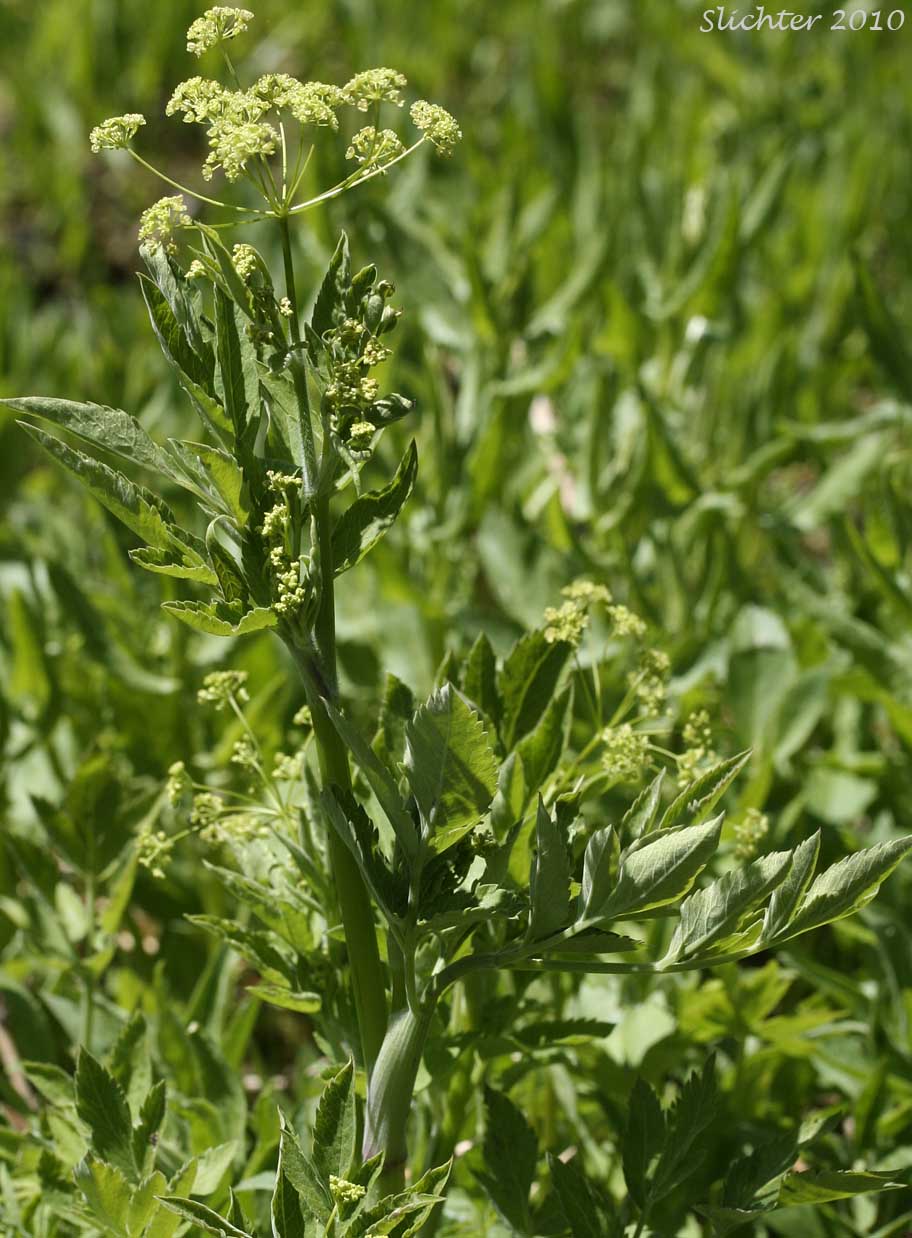
 The
photo at right shows the largely glabrous fruit of western sweet-cicely as seen
along the Island Springs Trail #66 on the eastern slopes of Mt. Adams........August
25, 2005.
The
photo at right shows the largely glabrous fruit of western sweet-cicely as seen
along the Island Springs Trail #66 on the eastern slopes of Mt. Adams........August
25, 2005.
Also known as licorice-flavored sweet-cicely, mountain sweet cicely is a perennial herb with stout, erect stems from 40-120 cm high. The stems and leaves are strongly scented with a licorice-like odor. The herbage varies from glabrous to fairly densely covered with very small, coarse, stiff hairs. The leaves are one to three tims ternate or ternate-pinnate. The individual leaflets are lanceolate, lance-elliptic or ovate in shape with coarsely toothed to incised margins, or occasionally parted into 3 lobes. The leaflets are 2-10 cm long and 0.5-5 cm wide. The basal leaves are clustered and long-petiolate and several shorter petioled leaves on the stems.
The inflorescence consists of several umbels which are 6-16 rayed, the rays measuring from 1-5 cm long in flower and elongating up to 7 cm long in fruit. Bracts are typically lacking at the base of both the umbel and individual umbellets. The flowers are atop pedicels from 2-5 cm long and are usually yellow in color, although they may also be greenish-white. The fruits are glabrous, linear-oblong in shape with a rounded rather than tapered base (See photo below.), and measure from 12-20 mm long.
Mountain sweet cicely may be found in moist rock crevices, seasonally moist open slopes and in open coniferous forests.
Mountain sweet cicely may be found from southwestern Alberta west to British Columbia and south on both sides of the Cascade Mts (including the Coast Ranges) to central California and eastward to southern Colorado.
In the Columbia River Gorge, it may be found between the elevations of 100'-4200' from near Cape Horn east to near White Salmon, WA.